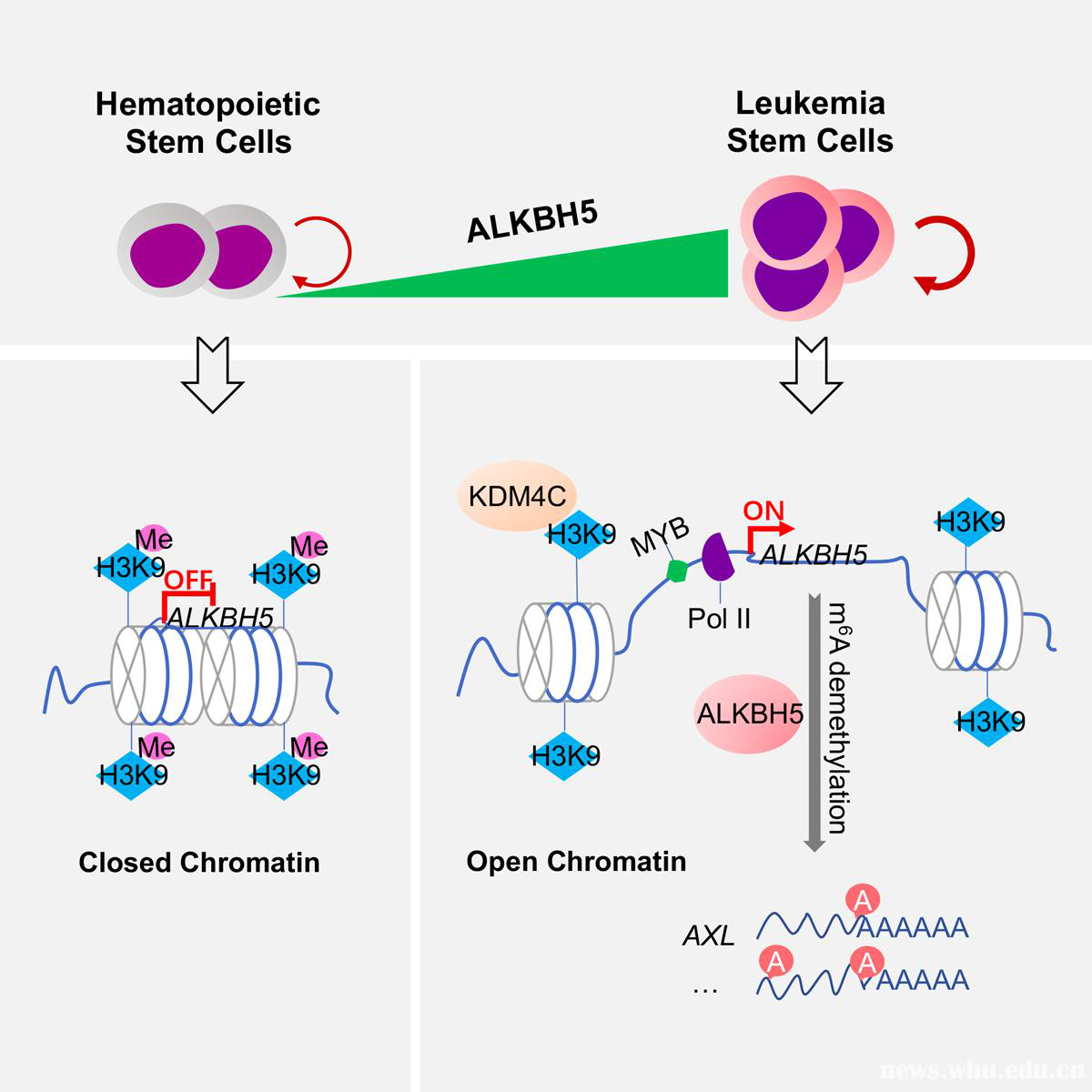On May 12, Cell Stem Cell published the latest research findings of Prof. Zhang Haojian’s team from the Frontier Science Center for Immunology and Metabolism and the Medical Research Institute, Wuhan University. The research introduces the molecular mechanism of how ALKBH5 selectively regulates the function of leukemia stem cells, which is of great significance for the clinical treatment of targeted leukemia stem cells and acute myeloid leukemia.
The article is entitled Leukemogenic Chromatin Alterations Promote AML Leukemia Stem Cells via a KDM4C-ALKBH5-AXL Signaling Axis. Prof. Zhang Haojian is the corresponding author of the article, and doctoral students Wang Jiazhen, Wang Peipei, Han Guoqiang (all of the Medical Research Institute, WHU) and Li Yicun (Hospital of Stomatology, WHU) are co-first authors.
Acute myeloid leukemia (AML) is the most common malignancy of the hematologic system, arising from leukemia stem cells in normal hematopoietic stem/progenitor cells. The drug-resistant leukemia stem cells cannot be eliminated by routine clinical chemotherapy, which is the primary cause for the development, drug-resistance and recurrence of AML. Therefore, elucidating the specific functional regulation mechanism of leukemia stem cells is very important for the clinical treatment of leukemia stem cells and acute myeloid leukemia. The early findings based on omics analysis tell that during the development of leukemia stem cells, ALKBH5 has shown increasing expression level and chromatin accessibility in its coding area. The team also found that ALKBH5 expression is positively correlated with poor prognosis.
The team has constructed conditional knockout mice, using a mice model of AML and a PDX model of patient origin with AML. According to their findings, ALKBH5 is required for maintaining leukemia stem cell (LSC) function but is dispensable for normal hematopoiesis. Mechanistically, KDM4C increases chromatin accessibility of ALKBH5 locus by reducing H3K9me3 levels, and regulates ALKBH5 expression via promoting recruitment of MYB and Pol II. It was also found that ALKBH5 plays a role in leukemia stem cells by regulating the stability of downstream mRNA like AXL. The findings link chromatin state dynamics with expression regulation of m6A modifiers and uncover the selective role and molecular mechanism of ALKBH5 in maintaining the function of AML LSCs, which provides a theoretical basis for the specific targeting of LSCs in clinical treatment of AML and has essential clinical applied value.

This research is supported by Prof. Li Shaoguang (Medical School of the University of Massachusetts), Prof. Liu Lingbo and Prof. Li Lei (Union Hospital of HUST), Prof. Zhou Fuling (Zhongnan Hospital of WHU) and Prof. Cheng Hui (Institute of Hematology, Chinese Academy of Medical Sciences, Tianjin).
Written by: Peng Wei
Rewritten by: Zhu Tong
Edited by: Wu Buer, Sylvia and Hu Sijia